- Joined
- Oct 6, 2021
- Messages
- 9
As I continue to setup my “new to me” Taiwanese import lathe, I have some questions regarding wiring. It has the option for single phase 110v or 220v. The switch and motor are wired up for 220v. There is an id plate on the motor that states 110/220v 26/13A. It came with a nema 6-15p plug end. The plug end and cord goes into a box on the back of the lathe and the 3 wires are attached to a terminal block. The lathe wiring comes off the terminal block to the lathe fwd/rev switch then to the motor. I don’t see any visible fuse or circuit breaker protection on the lathe.
I have a 30amp circuit, 10/2 awg wire, with a 50 amp industrial outlet nema 6-50R in my garage/shop that I use for my welders and plasma cutter.
I would like to change the plug and and cord on the lathe to 10/3 and a nema 6-50P so I can plug it into the same outlet as I wouldn’t need to use my welder and lathe at the same time.
Questions:
1. If I’m reading the motor id tag correctly, at 220v it’s rated to 13amps. Would it be ok to use it on a 30amp circuit?
2. Should / can I add 15 amp fuse or circuit breaker protection to the lathe. (Is it possible that it’s internally protected, thermally)
3. I’m assuming it will run better/ stronger wired for 220v or should I change it to 110v?
I’ve attached some pictures of the lathe and id tags.
I have a 30amp circuit, 10/2 awg wire, with a 50 amp industrial outlet nema 6-50R in my garage/shop that I use for my welders and plasma cutter.
I would like to change the plug and and cord on the lathe to 10/3 and a nema 6-50P so I can plug it into the same outlet as I wouldn’t need to use my welder and lathe at the same time.
Questions:
1. If I’m reading the motor id tag correctly, at 220v it’s rated to 13amps. Would it be ok to use it on a 30amp circuit?
2. Should / can I add 15 amp fuse or circuit breaker protection to the lathe. (Is it possible that it’s internally protected, thermally)
3. I’m assuming it will run better/ stronger wired for 220v or should I change it to 110v?
I’ve attached some pictures of the lathe and id tags.
Attachments
-
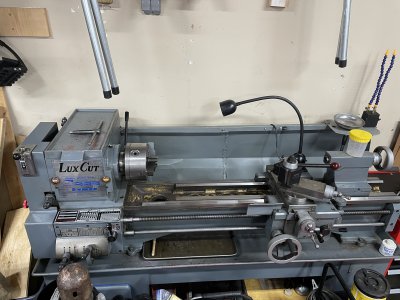 31B59912-439B-40EE-8618-3BA15BB14368.jpeg4.2 MB · Views: 24
31B59912-439B-40EE-8618-3BA15BB14368.jpeg4.2 MB · Views: 24 -
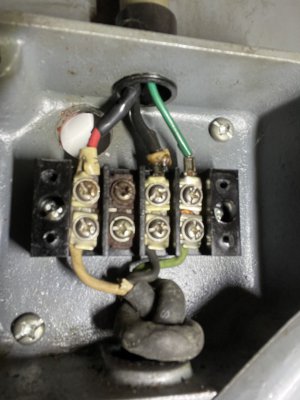 7B24FFAE-4693-4CA6-942C-1C4844FE82D2.jpeg1.5 MB · Views: 24
7B24FFAE-4693-4CA6-942C-1C4844FE82D2.jpeg1.5 MB · Views: 24 -
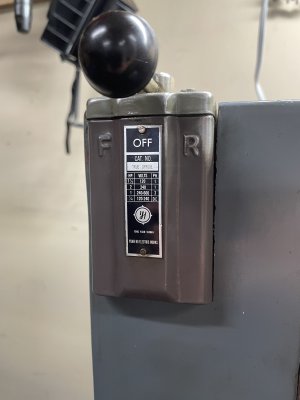 562A1179-35C3-4196-83D4-35845EF54DF3.jpeg1.5 MB · Views: 23
562A1179-35C3-4196-83D4-35845EF54DF3.jpeg1.5 MB · Views: 23 -
 8AC6516A-5AA5-4B84-83CC-2256D2C07746.jpeg1.9 MB · Views: 23
8AC6516A-5AA5-4B84-83CC-2256D2C07746.jpeg1.9 MB · Views: 23 -
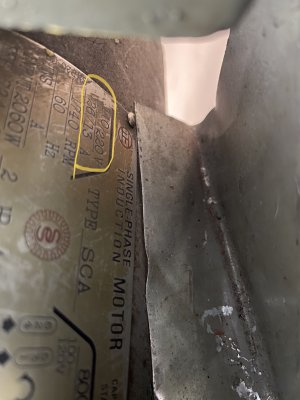 78E03490-A4A9-4BC6-B83A-E58C4C1836E1.jpeg759.2 KB · Views: 23
78E03490-A4A9-4BC6-B83A-E58C4C1836E1.jpeg759.2 KB · Views: 23 -
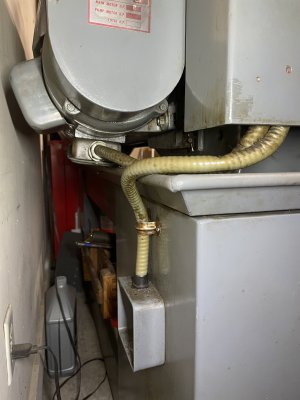 456A1819-5A2E-46C3-A59A-867C47CD9CE0.jpeg1.8 MB · Views: 19
456A1819-5A2E-46C3-A59A-867C47CD9CE0.jpeg1.8 MB · Views: 19 -
 CD80BC03-0047-444D-9188-42AECAA07740.jpeg1.3 MB · Views: 22
CD80BC03-0047-444D-9188-42AECAA07740.jpeg1.3 MB · Views: 22

